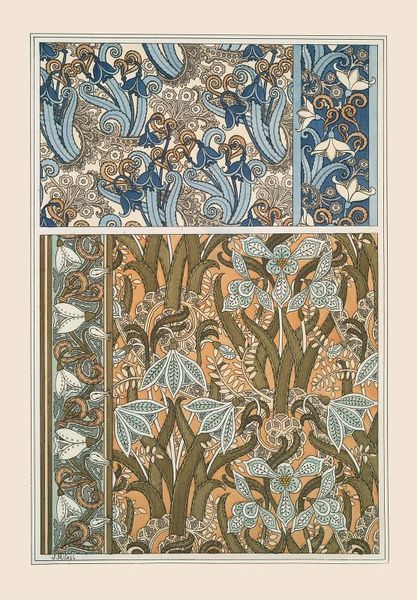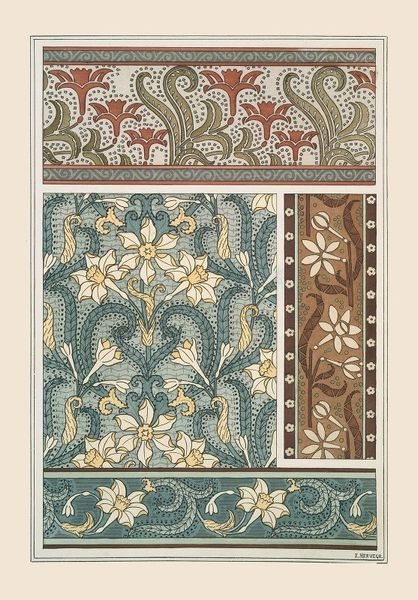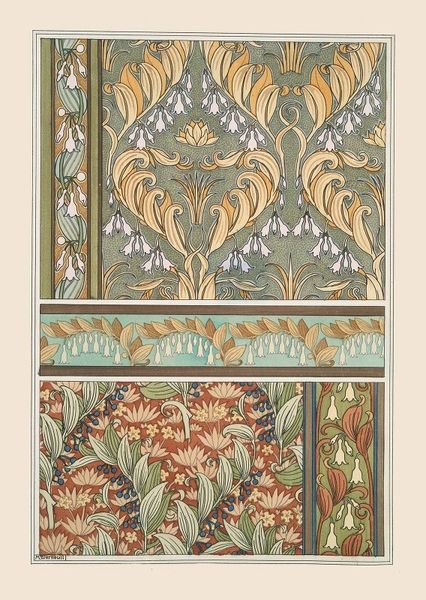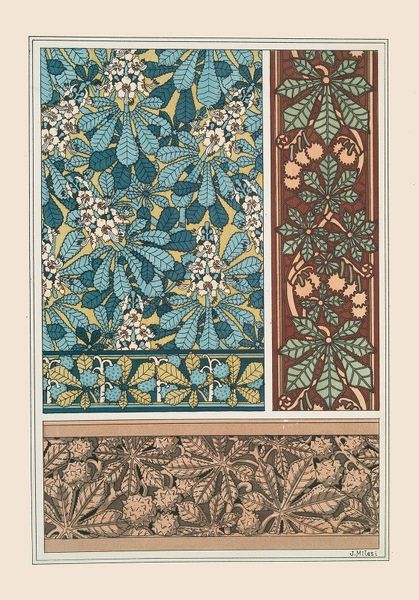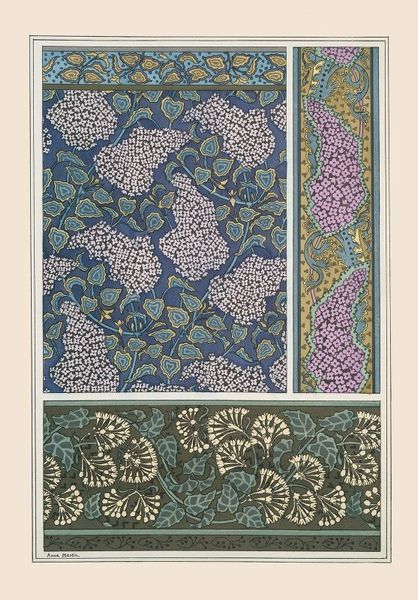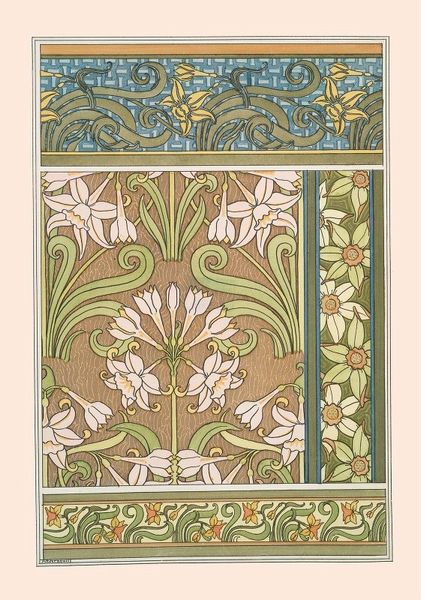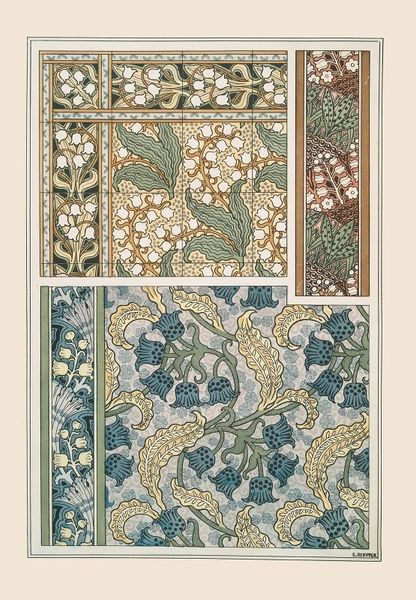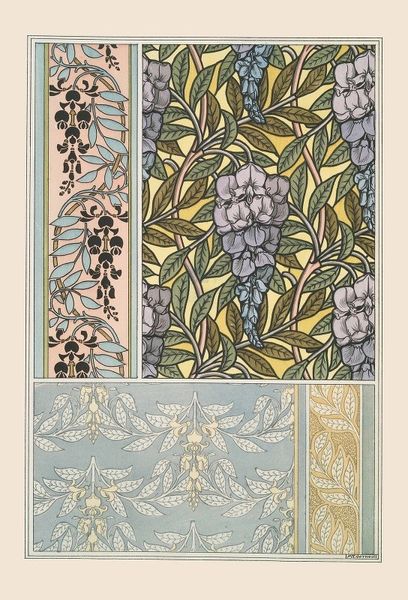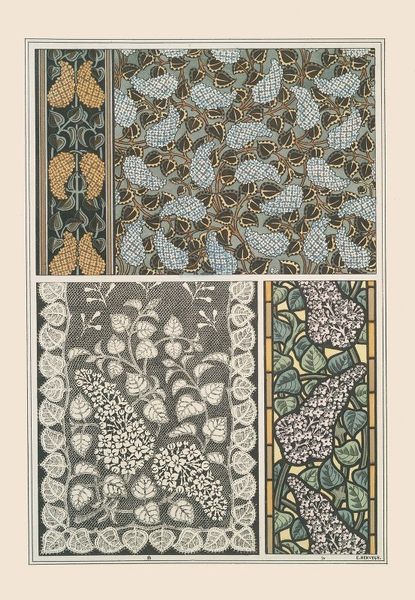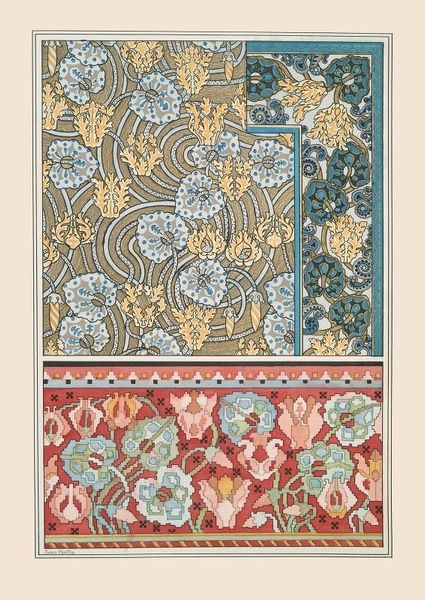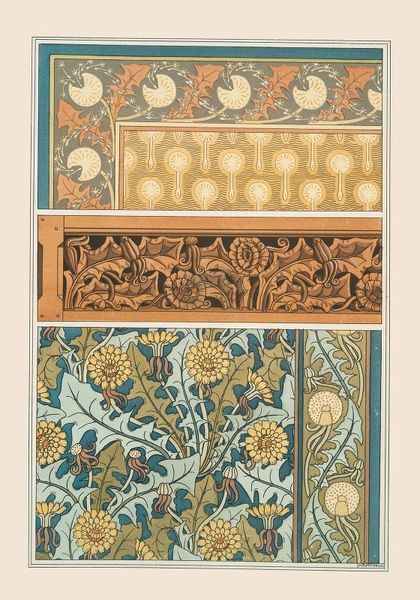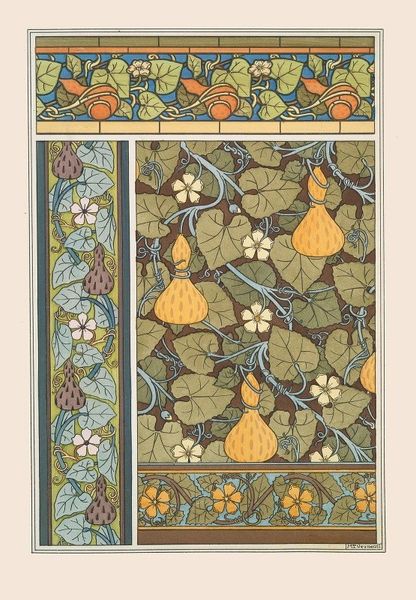
drawing, graphic-art, textile
#
pattern heavy
#
drawing
#
graphic-art
#
natural stone pattern
#
naturalistic pattern
#
art-nouveau
#
textile
#
pattern background
#
ethnic pattern
#
geometric
#
repetition of pattern
#
vertical pattern
#
pattern repetition
#
textile design
#
decorative-art
#
layered pattern
Copyright: Public Domain: Artvee
Editor: So, this is Maurice Pillard Verneuil’s "Muguet 3," created in 1896. It looks like a study of patterns for textiles or wallpaper. The way the lilies of the valley are stylized and repeated, it's almost overwhelming. What do you see in this piece? Curator: I see Verneuil engaging in the Art Nouveau project of democratizing art. Mass production was feared but embraced as an opportunity to infuse beauty into everyday life. Consider who gets to decide what’s beautiful, and for whom? Designs like this were meant to uplift the domestic sphere, which, historically, was considered women’s space. What does it mean, then, to create art for an audience often excluded from the formal art world? Editor: So, it’s not just about making something pretty; it’s about challenging who art is for? Curator: Exactly. Verneuil is blurring the lines between fine art and craft. These floral motifs, these “feminine” subjects, gain new significance when seen as a challenge to the traditional, male-dominated art establishment. How might the repetitive nature of the pattern itself mirror the repetitive labor often associated with women's work? Editor: I hadn't thought of it that way. It makes me think about how societal expectations of women might be subtly embedded within these decorative choices. Curator: Precisely. The wallpaper isn’t *just* wallpaper. It’s a reflection of social and political tensions playing out in the aesthetic realm. Where else do you see hints of tension or potential for a narrative? Editor: Maybe in how contained the patterns feel within the borders, or maybe the almost rigid symmetry could point to societal structures and expectation that constrained even something as seemingly innocent as wallpaper. Thank you! Curator: And thank you for prompting me to re-evaluate how aesthetics intertwine with broader cultural forces!
Comments
No comments
Be the first to comment and join the conversation on the ultimate creative platform.
